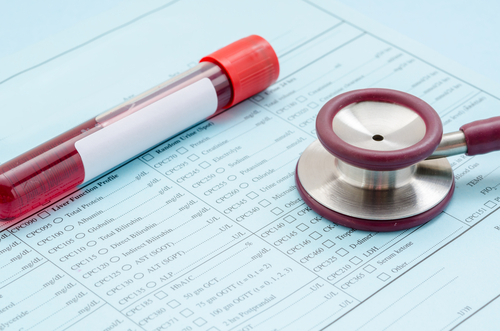First Results from Phase 3 Trial Expected to Support FDA’s Accelerated Approval of Voxelotor for Sickle Cell
Written by |

Once-daily treatment with voxelotor, Global Blood Therapeutics’ lead therapy candidate, can effectively increase the amount of hemoglobin in about 58% of patients with sickle cell disease (SCD) in just 12 weeks, according to results from Part A of a Phase 3 trial.
Supported by these positive results, the company has recently met with the U.S. Food and Drug Administration to discuss the possible accelerated approval of voxelotor.
Under its accelerated approval program, the FDA can grant early approval to therapies that show high potential to provide a clinical benefit for patients with serious or life-threatening diseases over existing therapeutic options. The company is still required to complete additional clinical studies to prove the anticipated benefits of the therapy.
“Based upon voxelotor’s robust impact on hemolytic anemia, we believe it meets the standard for accelerated approval, and we look forward to providing further updates on our regulatory discussions as soon as possible, but no later than year-end,” Ted W. Love, MD, president and CEO of GBT, said in a press release. “We are grateful to the patients and families who have participated in our clinical studies, allowing us to potentially deliver this transformative therapy to the SCD community.”
The ongoing, randomized, double-blind Phase 3 HOPE trial (NCT03036813) is a two-part study designed to evaluate the effectiveness and safety of voxelotor in sickle cell patients ages 12 to 65.
In part A, researchers compared the effects of 900 or 1,500 mg per day of voxelotor with a placebo in 154 patients treated for at least 12 weeks. Part B originally planned to enroll 250 patients who would be randomized to receive either a placebo or a dose of voxelotor selected from Part A.
However, the company says that, at this time, it does not plan additional enrollment until it completes discussions with the FDA. The trial will continue to dose patients enrolled in part A and approximately 100 additional patients across all three treatment arms.
Results from the first part revealed that 58% of patients taking the 1,500 mg dose and 38% of those taking the 900 mg dose achieved an increase in hemoglobin levels greater than 1 g/dL at 12 weeks, compared with only 9% of patients taking placebo.
This positive result is in agreement with the pre-established efficacy mark of a 35% response rate agreed upon with the FDA to demonstrate the treatment’s therapeutic potential.
Additionally, both doses tested led to significant improvements in the levels of reticulocytes (immature red blood cells) and bilirubin, two biomarkers of healthy blood cells that further demonstrated the effectiveness of voxelotor in treating sickle cell disease.
The beneficial effects of the investigational therapy were not influenced by other ongoing therapies, demonstrated by the fact that 64% of patients enrolled in part A were on background use of hydroxyurea.
Voxelotor-treated patients experienced fewer acute vaso-occlusive crises (VOC), a painful and potentially severe complication of SCD, than the placebo-treated group. However, this difference did not achieve statistical significance due to the short follow-up period.
“Increasing hemoglobin levels by reducing hemolysis [red cell destruction] in SCD patients is likely to decrease morbidity and mortality,” said Elliot Vichinsky, MD, director of the Comprehensive Center for Sickle Cell Disease at UCSF Benioff Children’s Hospital Oakland. “The [biological mechanism] and morbidity associated with SCD result from two distinct pathways: hemolytic anemia and vaso-occlusion. New therapies that address each pathway are important and desperately needed.”
In general, the treatment was safe and well-tolerated by the patients, with similar safety profiles between the two tested doses.
GBT is planning to present the results from Part A of HOPE trial at an upcoming medical meeting later this year.
GBT is also currently evaluating the safety and effectiveness of voxelotor in adolescents with sickle cell disease in the Phase 2a HOPE-KIDS 1 trial (NCT02850406).
Preliminary results showed that the therapy could decrease the severity of the disease by 83%. In addition, five patients showed no evidence of the disease after 16 weeks of daily treatment, and 55% achieved hemoglobin function improvements.
In May, an independent data and safety monitoring board completed a clinical safety review and did not found any safety concerns related to the treatment. Based on this positive review, the company is continuing the voxelotor clinical program, and will start dosing children as young as 4 years old in the HOPE-KIDS 1 study.
Voxelotor, formerly known as GBT440, is designed to be an oral, once-daily therapy for SCD. It is intended to increase hemoglobins’ affinity for oxygen, which, when bound, will prevent the aggregation of hemoglobins and the resulting sickling of red blood cells.
The FDA granted the treatment breakthrough therapy designation in January, in addition to the previously granted fast track, orphan drug, and rare pediatric disease designations given to voxelotor as a potential sickle cell treatment. The European Medicines Agency also included volexotor in its Priority Medicines (PRIME) program.
These recognitions are granted to therapies that have demonstrated promising results to treat rare diseases, and will provide support for faster development and review for approval.





